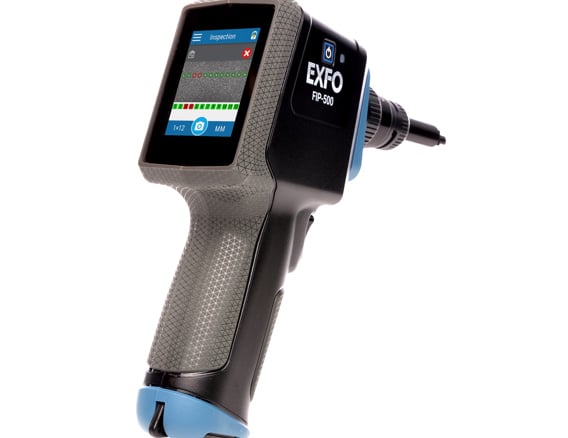Top 10 challenges optical measurement system can solve in manufacturing
All You Required to Find Out About Robotic Vision and Its Applications in Advanced Optical Measurement Equipments
Robotic vision stands for a considerable improvement in the intersection of computer vision, expert system, and artificial intelligence. This modern technology boosts the accuracy of optical dimension systems, making it possible for real-time information evaluation and boosted quality assurance. Its impact extends multiple markets, from producing to medical care. Nonetheless, the evolving landscape of robotic vision increases inquiries concerning future capacities and applications (robotic vision). What innovations exist ahead in this transformative area?
Comprehending Robotic Vision: Trick Concepts and Technologies
Robotic vision includes the modern technologies and methods that enable makers to translate and understand aesthetic information from their environment. This area combines elements of computer vision, man-made intelligence, and artificial intelligence to promote automatic decision-making based on visual data. Secret concepts consist of photo processing, which entails the improvement and analysis of images to draw out significant features, and things acknowledgment, which allows machines to recognize and classify objects within a scene.

The Assimilation of Robotic Vision With Optical Measurement Systems
As industries progressively require accuracy and performance, the assimilation of robotic vision with optical measurement systems has arised as a transformative technique. This synergy allows robotics to view and translate their environments, enhancing the ability of optical dimension systems to assess and assess things with unparalleled precision. By furnishing optical sensing units with sophisticated imaging innovations, robot vision makes it possible for real-time information collection and processing, assisting in instant changes to measurement parameters.
The combination encourages automated systems to spot variants in dimensions, surface area high quality, and alignment, which are critical in quality control procedures. Enhanced algorithms, such as device knowing, more increase this assimilation by boosting the systems' capability to adapt to various settings and circumstances. Consequently, the integration not just streamlines measurement processes however likewise decreases mistakes, making sure that products satisfy strict industry standards, therefore solidifying the role of robotic vision in the future of optical dimension systems.
Applications of Robotic Vision in Production
In contemporary manufacturing atmospheres, making use of vision systems has actually changed production procedures by enabling machines to execute tasks with exceptional precision and rate. Robotic vision systems are increasingly used for quality assurance, where they inspect products for flaws and assurance adherence to requirements. These systems utilize cameras and advanced formulas to evaluate products in real-time, substantially lowering the risk of human error.
In addition, robotic vision facilitates automation in assembly lines, allowing robotics to precisely recognize components and construct them with minimal downtime. This modern technology likewise improves inventory administration, as vision systems can check supply levels and spot disparities, assuring a seamless supply chain.
Robotic this hyperlink vision aids in the application of wise manufacturing facilities, where information from vision systems can be integrated with other technologies to optimize workflows (fibre testing equipment). Generally, the applications of robotic vision in producing demonstrate its critical function in boosting effectiveness, top quality, and efficiency throughout different fields
Robotic Vision in Health Care: Revolutionizing Person Treatment

In rehabilitation, robotic vision help in keeping track of individual progress and tailoring treatment sessions to private demands. It supports physician by automating jobs such as data collection and client surveillance, enabling more time to concentrate on straight person interaction. In addition, robotic vision improves telemedicine by making it possible for remote diagnosis and digital assessments, linking the gap in between individuals and health care suppliers. On the whole, the application of robot vision in health care is transforming person care, leading to enhanced outcomes, effectiveness, and person complete satisfaction.
Future Fads and Growths in Robotic Vision Innovation
The quick advancement of robotic vision modern technology guarantees to additionally improve its applications across different markets, including healthcare. Future patterns suggest a significant shift towards incorporating expert system and equipment understanding, making it possible for systems to gain from huge datasets and enhance accuracy with time. Improved sensor technologies and deep learning formulas are expected to improve object recognition capabilities, allowing robotics to analyze intricate helpful site atmospheres better.

The assimilation of increased reality (AR) with robot vision will likely change just how robotics help in medical procedures and diagnostics. This harmony will certainly facilitate real-time data visualization, enhancing decision-making processes. Furthermore, miniaturization of parts will certainly bring about even more portable and flexible robot vision systems suitable for a range of tasks. As these developments unfold, markets will witness raised automation and performance, solidifying robot vision as a keystone of cutting-edge technological options.
Often Asked Inquiries
What Are the Key Parts of a Robot Vision System?
The primary parts of a robot vision system include cams for picture capture, cpus for data evaluation, algorithms for interpretation, and actuators for motion. With each other, these aspects enable robots to regard and connect with their environment efficiently.
Exactly How Does Robotic Vision Improve Accuracy in Measurements?
Robotic vision enhances measurement precision by making use of advanced imaging innovations, making it possible for Read Full Article precise things detection and spatial analysis. This ability minimizes human mistake, boosts repeatability, and permits real-time modifications, eventually improving total dimension dependability and effectiveness.
What Industries Benefit The Majority Of From Robotic Vision Technology?
Different industries profit substantially from robot vision modern technology, consisting of manufacturing, medical care, agriculture, and logistics. These markets utilize improved accuracy, effectiveness, and automation, causing enhanced performance and lowered operational prices in their respective processes.
Can Robotic Vision Systems Job in Low-Light Issues?
Robotic vision systems can without a doubt work in low-light problems, utilizing innovative sensors and formulas to boost photo quality. This capacity enables them to execute properly in different settings, including commercial and security applications, despite minimal lighting.
What Are the Costs Linked With Implementing Robotic Vision?
The prices connected with executing robotic vision differ substantially, influenced by components such as cams, software program, and assimilation. Additional costs consist of upkeep, training workers, and possible upgrades to existing systems, which can gather with time.